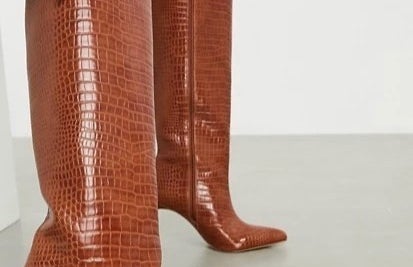Contrary to their marketing, leather alternatives are not necessarily sustainable.
The perfect non-animal leather is a coveted concept to anyone practicing environmentally responsible purchasing.
Cult-favourite products including Aritzia’s The Melina Pants taut vegan leather as a solution in this hunt for a fabric that, “looks and feels like the real thing.”
The term “vegan” denotes a sense of eco friendliness which is not reflected in the material’s manufacturing process. Harper’s Bazaar said brands using “buzzy words” to appear particularly sustainable is known as greenwashing —a strategy which bolsters company image while misleading consumers.
In fact, most vegan leathers are made from synthetic polymers with negative environmental impacts including polyurethane and polyvinyl chloride—plastics, to put it simply.
Both substances are made from fossil fuels and release considerable amounts of carbon dioxide in production, according to Slate Magazine.
The making of polyvinyl chloride (PVC) also creates dioxins. The World Health Organization (WHO) categorizes these chemically-related compounds as persistent environmental pollutants.
“Dioxins are highly toxic and can cause reproductive and developmental problems, damage the immune system, interfere with hormones and also cause cancer,” said a WHO fact sheet.
Given its dioxin-emitting nature, chlorine’s massive role in PVC production is concerning. The Vinyl Council of Australia found that 30 to 40 per cent of the world’s manufactured chlorine is used to make PVC.
A blog post from the Minimalist Vegan adds that PVC takes over 500 years to decompose into microbeads which eventually pollute our oceans. For comparison’s sake, animal leather decomposes in about 50 years.
The hope for the faux leather trend is somewhat revived by its lesser-known versions which minimize or eliminate usage of PVC.
People for the Ethical Treatment of Animals (PETA) said these alternatives are made from pineapple leaves, cork, apple peels and other fruit waste. Still, some percentage of polymers is combined with these materials, so the final product is not truly biodegradable.
Alternative leather company Desserto, for instance, uses nopal cacti to create a highly durable leather-like fabric. The plant grows abundantly without pesticides, needing very little water to thrive.
The company’s information page said an increase of nopal plantations can strategically relieve the accumulation of carbon dioxide in the atmosphere. The site also showcases collaborations with brands like H&M and Adidas.
Members of The Circular Laboratory investigated Desserto and its manufacturing process.
“The sustainability case for this material is a lot weaker than it looks,” said Dr. Ashley Holding and Paula Lorenz. “The fact that many publications do say this material is plastic free is a sign that the way it is marketed has led many people to an incorrect conclusion.”
The fact is cactus only makes up 30 per cent of Desserto’s material by weight. Its main ingredient is polyurethane.
“Using any plastics at all entails all of the negative externalities associated with fossil resource exploration, extraction, transportation, and processing,” said Dr. Luke Haverhals for The Circular Laboratory.
Haverhals is the founder of Natural Fibre Welding which created a leather substitute called Mirum.
Mirum is made with exclusively natural nutrient and bio-neutral ingredients. No petrochemicals or plastics are involved – the material is 100 per cent recyclable.
Holding and Lorenz commended this commitment to recyclability saying, “Approaches like the one taken by Dr. Haverhals have the potential for a much better environmental impact in the long run.”
While the label of “vegan” occasionally indicates such dedication to sustainability, it is clear that the two are hardly synonymous.
Experts for Harper’s Bazaar debate whether environmental dangers posed by plastic vegan leathers are comparable to those posed by animal leathers – which are often co-products of the meat business.
Ultimately, ingredient and manufacturing transparency would provide shoppers with a truer sense of sustainability practices—or lack thereof—in both leather and leather-alternative industries.

